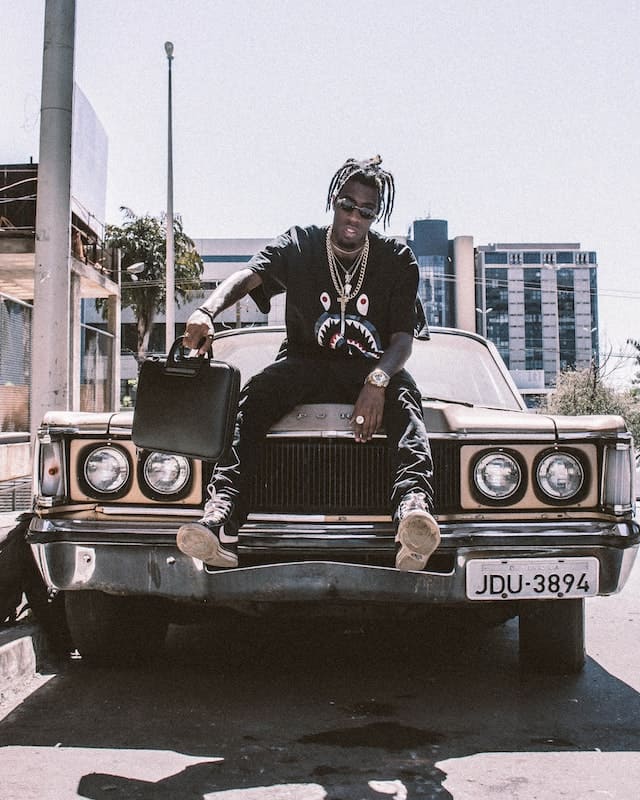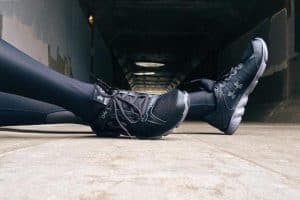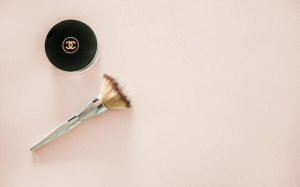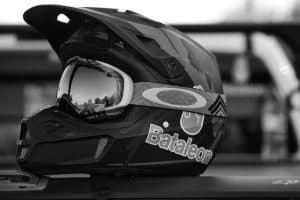One of the most well-known names in street fashion is the high-end Tokyo label Bape, while the New York City label Supreme is known for its gritty skate style. Both brands started small but have grown into industry giants, and their respective streetwear lines enjoy levels of fervor that no other label could match. The two streetwear giants with devoted and occasionally overlapping fan bases have even worked together. James Jebbia and NIGO (the founders)’s foresight in understanding the potential of cross-brand cooperation has paved the way for other designers and companies. That brings the question; if the two giants of street culture squared off against one another, which one would come out on top? This Supreme vs Bape article compares the two companies by analyzing their products and services, histories, and marketing approaches.
Bape vs Supreme- Overview
American clothing and skateboarding lifestyle brand Supreme was founded in New York City in April 1994 and is currently owned by VF Corporation. The brand’s intended audience consists of skateboarders, rap fans, and young people in general. Supreme not only makes skateboards but also apparel and accessories under the name. Barbara Kruger’s work is likely the inspiration for the “Supreme” logo, which has a crimson box with the word “Supreme” written in white Futura Heavy Oblique. Supreme is a well-known label in several regions, including East Asia, Oceania, Europe, and North America.
James Jebbia launched Supreme in New York City in April 1994 as an American clothing and skateboarding lifestyle brand. The brand’s intended demographic consists of young people, especially those interested in skateboarding and hip hop. The company’s products range from clothing and accessories to skateboards. The logo, a red box with the word “Supreme” written in white Futura Heavy Oblique, is commonly believed to be inspired by the work of Barbara Kruger. Consumers in the United States, Europe, China, and Japan all love the Supreme brand. Supreme’s humble beginnings as a company were funded by a modest $12,000. However, a recent report by WWD estimated the brand’s value at a whopping $1 billion.
Bape History
This Bape vs. Supreme section delves into the origins of the A Bathing Ape.
Inspiration from Celebs
Tomoaki “Nigo” Nagao, the company’s founder and former owner, credits his mother, a nurse, and his father, a billboard maker. Also, he looked up to DJ/fashion icon Hiroshi Fujiwara as an inspiration for his business practices. The managing director of the clothing boutique Astoarobot gave him the moniker “number two” because of the resemblance between the two men. The likes of Elvis Presley, the Beatles, the Beastie Boys, and Run-D.M.C. are among the hip-hop artists who influenced Nigo early on.
A Bathing Ape in Lukewarm Water
After studying fashion journalism at Bunka Fashion College, he joined Popeye magazine as an editor and stylist. He opened his first store, “Nowhere,” in Ura-Harajuku on April 1, 1993, with the help of Jun Takahashi of Undercover and a loan of four million yen from a friend who also allowed him to use his store. When he decided to launch his product line, he took inspiration from the 1968 film Planet of the Apes for its name. Nigo claims that “A Bathing Ape in Lukewarm Water” is the inspiration for the name “BAPE.” Japanese people often take their daily showers in water that is hotter than 104 degrees Fahrenheit. To bathe in lukewarm water is to overindulge indolently since it suggests you’ve been in the tub for so long that the water has cooled. This is meant as a sarcastic jab at the brand’s target demographic—younger Japanese people who are also the brand’s consumers—and their penchant for slack-jawed luxury. He had Cornelius, a musician, wear the brand’s T-shirts on stage so that more people would see them. For two years, he made between 30 and 50 shirts per week, sold half, and gave the rest away to friends. Nigo’s first album, Ape Sounds, was released in 1997 on Mo’Wax and featured UNKLE member and DJ/producer James Lavelle. Nigo is not only a partner in Pharrell Williams’ Billionaire Boys Club and Ice Cream but also the label’s head designer.
Bape Sold
Hong Kong’s I.T Group, a fashion conglomerate, bought A Bathing Ape on February 1, 2011. The majority of A Bathing Ape was purchased by I.T. (90.27 percent). I.T. spent a total of HK$21,850,000 (roughly US$2.8 million) to acquire 668 shares. Nigo, A Bathing Ape’s founder, stayed on as Creative Director for another two years, though he did not disclose specific plans for the company’s creative future or its planned growth.
Supreme- History
Now that we know how Bape was born, it’s time to delve into Supreme’s past.
Skaters and Actors Join Hands
James Jebbia launched the company in 1994 when the first Supreme store debuted on Lafayette Street in Lower Manhattan in a converted office space. The clothes were arranged around the store’s periphery, leaving a spacious central area that skaters could easily navigate while carrying heavy backpacks. In 1994, the store’s founding crew included skaters and actors like Harold Hunter and Justin Pierce (both of whom have since passed away), who had worked as extras in Larry Clark’s film Kids. As Jebbia put it, there was nowhere else to buy skate products in Manhattan, and that’s what prompted him to open Supreme. He put an emphasis on unique, hard-to-find items and said that the brand’s willingness to experiment was due to the skate community’s acceptance of unconventional ideas.
Partnership with Top Skateboarding Brands
Nearly twice the size of the first New York City store, complete with an indoor skate bowl, a second location opened in 2004 on North Fairfax Ave., Los Angeles, California. Tokyo, Nagasaki, Osaka, and Fukuoka are just some of the cities in Japan that you can visit. The aesthetic of the original Lafayette Street shop has been carried over to the satellite stores, which also use changing exhibitions of art and audio-visual displays to draw customers in. In addition to the company’s clothing line, several well-known skateboarding brands can be found in Supreme stores, including Vans, Nike SB, Spitfire Wheels, and Thrasher.
11th and 12th Stores and Running
Williamsburg, Brooklyn, was the site of Supreme’s eleventh store opening in October 2017, making it the brand’s second NYC location overall. Around half of the record label was sold to The Carlyle Group, a private equity firm, for around $500 million, as confirmed by CEO James Jebbia on October 6, 2017. Supreme’s first Manhattan storefront at 274 Lafayette Street was closed on February 25, 2019, and a new storefront opened at 190 Bowery on the same day. The 12th location of Supreme, located on San Francisco’s Market Street, opened in October 2019. Twice a year, Supreme unveils new collections. The current season’s collection is not available in its entirety but rather, select items are made available online and in stores every Thursday. A complete set of every Supreme deck ever made sold at auction in 2019 for $800,000. VF Corporation announced in November 2020 that they had reached an agreement to acquire Supreme in an all-cash transaction valued at US$2.1 billion. VF Corporation purchased the company from original investors Carlyle Group and Goode Partners LLC and founder James Jebbia. VF says that Jebbia will still be running the company. On May 6, 2021, the company opened its 13th retail location in Milan. Twice a year, Supreme unveils new collections. The current season’s collection is not available in its entirety but rather, select items are made available online and in stores every Thursday.
Everything Behind the Supreme Logo
The Supreme logo is a black circle with the company’s name written in futura oblique typeface inside it. Even though it’s a rather straightforward design, Supreme’s clientele finds comfort in the aggressive mix of typography and color scheme, which sends a sense of resistance to authority. An artist developed the visual style upon which the logo is based with the express purpose of conveying that message, whether or not she ever imagined that her work would become the symbol for a globally recognized fashion label.
Although it’s a shame that Barbara Kruger’s artwork was appropriated in a way that she wouldn’t have approved of, it’s worth noting that Supreme isn’t the only skatewear company to employ a logo that borrows elements from another company’s branding. That doesn’t justify Supreme’s use of Kruger’s aesthetic in their emblem, but it does show that they weren’t breaking any rules. Amidst all the debate, it’s hard to deny the positive effects of the Supreme logo’s striking appearance on the company’s success. The logo manages to both quietly appeal to the tastes of its target demographic and stand out from the crowd thanks to its minimalistic and clean aesthetic.
Supreme’s iconic emblem has been featured prominently in numerous media over the years. Even more famous people than NFL wide receiver Odell Beckham Jr. and pop star Justin Bieber have been spotted wearing clothing with the Supreme logo, and the brand has collaborated with the likes of Mike Tyson, Lady Gaga, Michael Jordan, Neil Young, and dozens more to create photoshoots featuring their logo. Supreme has collaborated with a UK artist who builds crop circles to create a gigantic crop circle with the Supreme logo at an undisclosed site in California, one of many pranks and artistic initiatives where the logo has been the centerpiece to increase its recognition and appeal. The company then made a short film about crop circles in which the circle was shown.
Why the BAPE Camo Is So Special
Perhaps the most intriguing aspect of the BAPE brand is the BAPE Camo print, also known as the “Cloud Camo,” which has become one of the most recognizable patterns of the past two decades. The logo fuses a number of diverse design aspects; first, its obvious reference to military camouflage is spot-on with the Japanese (and global) obsession with military attire. While most camouflage patterns are meant to keep things out of sight, the BAPE cloud camo manages to do the opposite, drawing attention wherever it goes.
Secondly, it’s interesting to think of BAPE camo in relation to Nigo’s artistic hero, Andy Warhol. Nigo’s attempt at blending high and low culture by covering everything he owns in BAPE camo. This comes in pink, blue, red, and green and is reminiscent of Andy Warhol’s attempt to elevate mass-produced culture to the level of fine art. BAPE camo is not tacky or corny despite its blobby, hyper-flat look, influenced by traditional duck-hunting camouflage. Undoubtedly, that splotchy, super-smooth design has some inspiration from Tokyo, the birthplace of Hello Kitty, anime, collectible dolls, and kawaii culture. It devalues the military and elevates the dignity of disrespect.
A Great Online Class: Creation of a Streetwear Brand
If you are interested in learning more about how you can create a successful streetwear brand, we recommend taking a look at the online class “Creation of a Streetwear Brand”.
The course is currently under promotion, but you can use the discount code: T_BROWNLEES-PROMO to get an additional 10% discount on your purchase.
This online class offered by Domestika, at a very inexpensive price covers all you need to know to create create a streetwear brand, from developing your mood boards to digitizing your collection and more. If you apply to the course through the link below you’ll be supporting 440 Industries, and we thank you for it!
So, Who Stands Out Between in the Supreme vs Bape Streetwear Battle?
Since their humble beginnings as skateboarding labels, Supreme and Bape have grown into one of the most valuable companies in the world. Because of their association with celebs and luxury goods conglomerates, such as LVMH, Supreme and Bape are now one of the most expensive brands in the streetwear and high fashion industries. Their outfits are aimed squarely at the youth market, specifically skateboarders, rap lovers, and punk rockers. Those who have an affinity for streetwear can find something to their liking in the vast collections presented by Bape and Supreme. In conclusion, the high prices of Supreme and Bape products can be attributed to a number of variables, including their uniqueness, scarcity, resale value, and partnerships with established fashion houses. That said, the winner in the Supreme vs Bape battle boils down to the final consumer depending on their tastes, preferences, and needs.








